Using the Backwards Sled Pull Exercise for Knee Longevity

Your knees have to be strong and agile.
But they are also vulnerable to short-term and long-term damage. Move the knee the wrong way when you plant it, and you could tear an ACL. Run for miles a day on sidewalks and roads and in 30 years you may require knee replacement surgery
There has been a lot of talk lately about the benefit of the backward sled pull and its benefits for strong and healthy knees.
It has been a major focus of @kneesovertoesguy Ben Patrick, who has a strong following on Instagram and recently appeared on the Joe Rogan podcast.
Today, we’re going to look into the backwards sled pull and why it’s one of the best knee exercises you can do for knee longevity.
Why are your knees important?
Your knees are the largest joints in your body. They allow you to walk, run, climb, and jump. They are one of the most-used joints in your body, and they endure a lot of stress on a daily basis.
Taking care of your knees is crucial to your overall health and mobility. Knee pain can sideline you for weeks, and knee surgery often requires weeks of rehabilitation before you regain a full range of motion.
Taking care of your knees by keeping them strong is important. Regular exercise is one great way to do it. Exercise keeps muscles strong while helping you to maintain a healthy weight.
Why should you perform knee strengthening exercises?
Knee exercises like the backwards sled pull help you stay active. They can also prevent osteoarthritis in the knee, a painful condition that occurs when the cartilage in the knee wears down and the bone starts to rub against bone.
Keep in mind that knee exercises don’t strengthen the actual knee joint. They strengthen the muscles surrounding the knees to make them perform more optimally and relieve pressure on these joints.
Before performing any knee strengthening exercises, you should do some light stretching to warm up the muscles. Walking, cycling, and a light elliptical machine workout can help warm up your muscles ahead of performing exercises that specifically target the knee.
Why is the backwards sled pull good for your knees?
Much like exercise in a pool reduces the strain on your body because of the buoyancy of water, the backwards sled pull exercise keeps the weight off of your knees completely. If you’re doing exercises as you hold on to a chair or lean against a wall, you’re still putting weight directly on your knees because you stand up straight.
The only ways to exercise without weight on your knees are to sit, lay down, or

lean backwards.
A backwards sled pull shifts your weight and center of gravity from your knees.
The leg motion and weight resistance combine to strengthen the muscles up and down your entire leg.
You Move the Sled, Not the Other Way Around
Ben Patrick, the “Knees Over Toes” guy, is a fitness guru and Instagram star. He is probably the biggest proponent of the backwards sled pull exercise, even though it’s been around for decades. (One internet article on it dates back to 2011).
The difference between other knee exercises and the backwards sled pull is that only you move the sled. The sled never moves you.
When you do squats or other weighted exercises, you’re taking some degree of risk. The weight (i.e. your body weight) is going move you down and then you are going to move it back. You risk hurting your knee because lifting your body weight straight up moves you against gravity.
The weight sled you use for the backwards sled pull has no wheels. It’s your job to try to drag it backwards while you’re looking back at it.
How to Perform the Backwards Sled Pull for Knee Longevity
Patrick calls this exercise “bulletproofing your knees.”
Also known as the backward sled drag, it’s an excellent exercise because it has the least impact on the knee joint itself while greatly increasing blood flow to your knees. Increased blood flow is the major marker for better muscle tone.
Start by attaching a harness to a sled with weights on it. The sled shouldn’t have wheels. Sleds can be iron bars with weights attached, one of those pieces of football equipment that linemen use for drills, or just a heavy object low to the ground with a lot of weight on it.
Most workout gyms will have a sled made of iron bars with power weights attached in 50-pound increments. It’s like a powerlifting apparatus, but cut in half and with weights that can pile up against the floor rather than on the side.
Next, put the harness around your hips. You might see people try this workout by grabbing two handles or ropes with their hands, but that’s not how to do this exercise. You want the focus to be on your knees, not your hands or arms. If you make it about your arms, then you’ll get more tired faster, and the benefits to your legs and knees won’t be as great.
Step into the harness, which is securely attached to the sled with ropes. Put the harness around your lower torso, just above the hips, as you remain facing the sled. Now lean back a bit.
At this point, you can feel the harness tightening as you put more of your weight on it. Remember field day during the last week of school? A backwards sled pull encourages you to strike a similar pose to the one you make when you’re in a tug-of-war using a rope. Only this exercise is much less strenuous.
Walk backward slowly at first while pulling the sled along a set length. You should feel the burn of your workout in the quads, hamstrings, and calves after a couple of times.
In essence, your knees are pushing your hips backwards, your hips are attached to the ropes, and the ropes pull on the weight. You’re the anchor person for the tug of war who keeps the rope around his or her waist while your teammates try to pull with all of their might.
The movement creates a different angle for your legs to pull weight. Rather than pulling against gravity and your weight alone, this time your legs pull against the ground to move a sled that is trying to stop you from pulling it.
Think of the backwards sled pull as a push up for your knees, only better.
Tips for Performing the Backwards Sled Pull for Knee Longevity
Make sure you have plenty of walking room to go from one end to the other. Workout gyms typically have a space for this kind of exercise.
Ideally, you have a sled that’s made for this type of exercise. If you have a gym membership, you can ask where this type of apparatus is.
Start with the lightest weight first so that your body gets used to the movements. After going from one end of the room to the other, add more weight. Obviously, the more weight you add, the more difficult the backwards sled pull will become.
Keep the back flat so it doesn’t curl up. You can perform backwards sled pulls standing upright or squatting down slightly. Squatting tends to stress the quad muscles a bit more compared to the natural stance of standing upright.
And of course, if you're nervous about the stability of your knee, using knee support when working out is always a good idea!
Great Results in Just 5 Minutes a Day
"Knees Over Toes Guy" Ben Patrick says you can "bulletproof" your knees in just five minutes. He recommends performing this exercise three times per week for five minutes before other types of leg exercises to achieve better blood flow to your knees.
Consider a few other factors for this workout such as your speed. Start out slowly. As you get used to it, think about jogging backwards a bit if you feel comfortable. How much can you step backwards? Your body’s natural pacing comes into play. The amount of weight you add to the sled also affects how the exercise feels on your legs.
The floor surface may also change how the workout feels. A carpeted or matted surface will create a different level of friction versus a cement or wood floor.
Experiment with the backwards sled pull as you start and get better at it. Alter your speed, such as going faster when it’s lighter and slowing down when it’s heavier, to find a good workout groove. Alter the length of your steps by jogging quickly but with shorter steps or slowly lunging with wider steps.
The weight on the sled should let you move as a brisk but sustainable pace.

The optimal movement lets you feel the burn of your leg muscles, get into a good rhythm with your arm movements, and cover enough range of your pacing.
You should feel no pain with these workouts. Only the burn of the muscles moving.
As with any workout, set it to music!
By the end of five minutes, you should feel plenty of burn and be sweating.
Rehabilitation for an Injured Knee
Experiencing knee difficulties? Backwards sled pulls are a great exercise because they let you work out your quads without putting pressure on the knee joint. Each step mimics the movement of a terminal knee extension, a popular movement used by physical therapists to rehabilitate your knees following surgery or an injury.
It’s a great workout for trying to strengthen the muscles around your knees, add muscle mass to your quads, and for people with poor knee movements who need a break from other knee exercises that aren’t as kind to the joint.
Other Reasons to Perform Backwards Sled Pulls for Knee Longevity
Surprisingly, the backwards sled pull is also a great exercise for your back. Because you’re leaning back and your knees aren’t fully supporting your spine, you can get a good leg exercise without putting pressure on your sore back.
Need another reason? Athletes typically exhibit less residual muscle soreness following a backwards sled pull workout than after a leg workout using traditional strength exercises. Again, this is because part of the weight of the exercise comes from the sled rather than from your body.
Strength and Conditioning for the Knee
You can use backwards sled pulls as a strength and conditioning exercise. The key lies in how you perform the sled pull.
To increase strength of the leg muscles around the knees: add more weight, shorten the distance you jog backwards, and decrease the rest interval between pulls. You’ll get a more intense workout.
When you want to increase conditioning, lighten the weight load, increase the distance, and take a longer break between intervals. One great venue for this is a football stadium or large field. This allows you to increase the distance as much as you need.
Distances and rest intervals depend on your individual capabilities. Athletes may use 20 to 40 yards for strength workouts, and then they double those distances for conditioning.
Ending Your Workout
Think about putting backwards sled pulls at the end of your workout as a finishing drill to enhance strength and conditioning. Because you also swing your arms back and forth when you jog backwards, you also get a good upper-body workout, too, as you strengthen your core.
Why are backwards sled pulls good for knee longevity?
Stronger muscles on either side of the knee make the joint stronger by keeping bones and ligaments in their proper places. Having muscle development will also increase blood flow and blood vessels to the legs, which brings more oxygen, nutrients, and healing to the knee. Healthy legs also mean better cartilage around the knee joint.
As a workout, these exercises won’t leave your legs as sore the next day compared to other exercises.
Always Talk to Your Doctor
One final tip: always talk to your doctor about making any changes to your exercise routine or physical activity. If you start to experience pain from doing a backwards sled pull, consult with your physician immediately. In order to prevent pain and increase stability, adding some knee support when working out is always a good idea, too!

















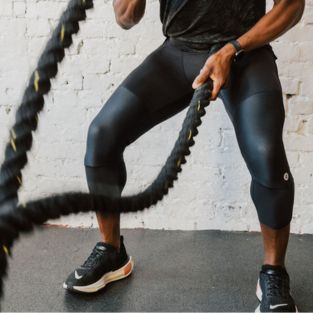
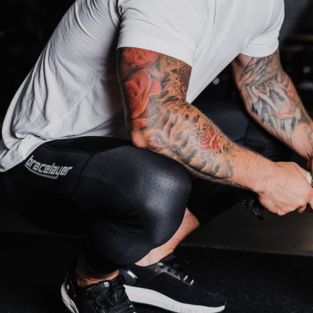
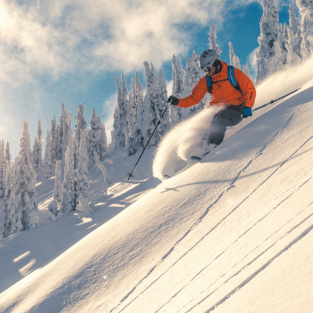
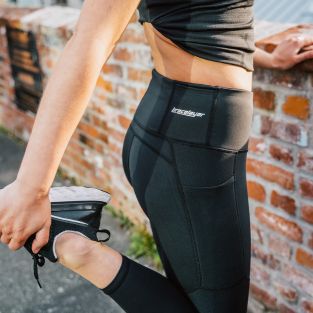
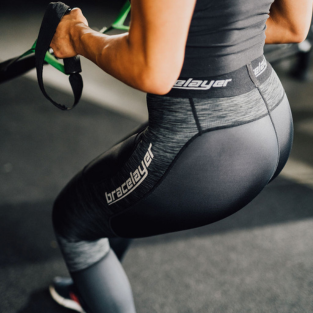
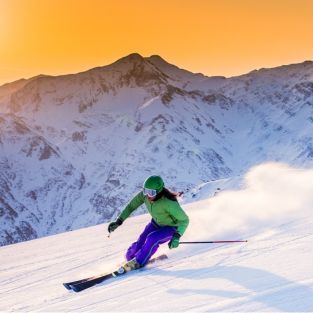
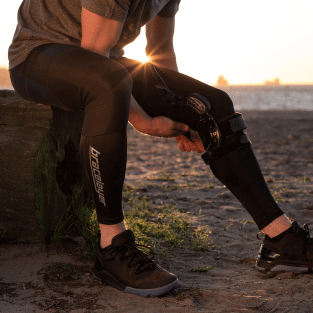
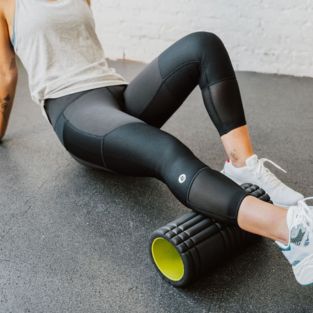
Leave a comment